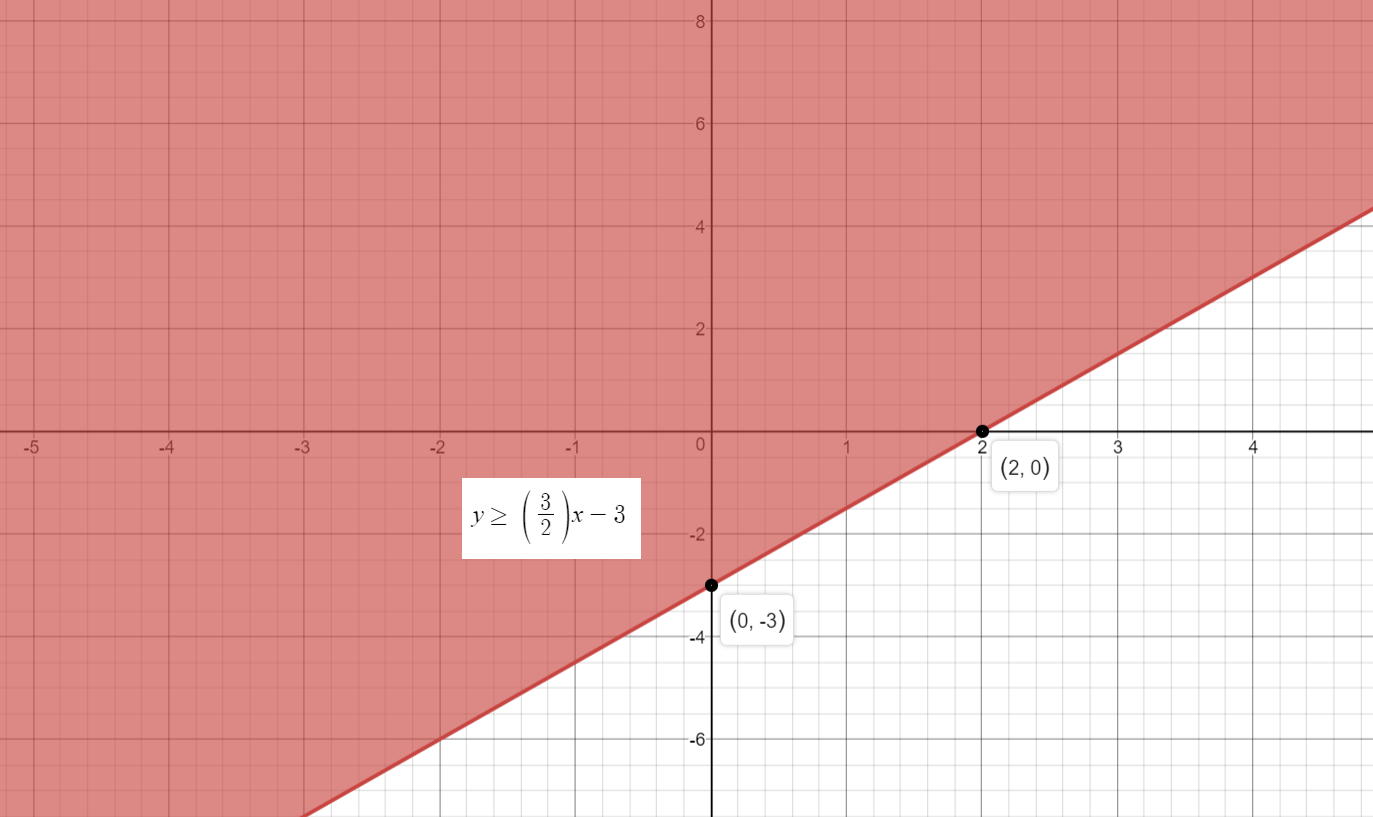How do you graph the inequality #y>=3/2x-3#?
1 Answer
Please read the explanation.
Explanation:
We have the inequality:
If we can find both the x-intercept and the y-intercept, we can graph.
To find the x-intercept, set
Replace
Add
Divide both sides by
Hence, x-intercept:
To find the y-intercept, set
Replace
Hence, y-intercept:
Use both the intermediate results, Res.1 and Res.2, and plot the points on a graph.
Join the two points
That would mean the value is a part of the solution.
Shading the Solution Region can be done as follows:
Use a Test Value to determine which part of the graph to shade.
Consider the point
Substitute these values of
We have the inequality:
This result is
So, the solution region is above the line of the graph.
And hence, our inequality graph will be:

Solid line used indicates that the solution contains the values on the line.
Hope it helps.

